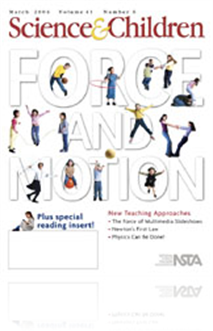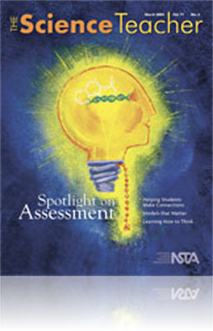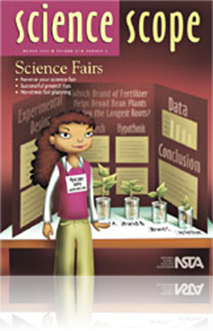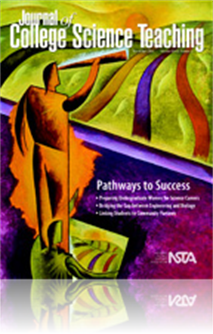All Resources
Journal Article
If science is the study of the natural world, how can we avoid physics and chemistry? Our students should understand the connections of the biological and physical realms before they hit the more abstract treatment in high school. This editorial in...
Journal Article
Career of the Month: An Interview with Microbiologist Dale B. Emeagwali
Although invisible to the naked eye, viruses, bacteria, fungi, and parasites can be found everywhere, from the air we breathe to inside our favorite foods. Microbiologists investigate how these organisms exist and affect our lives. Dale B. Emeagwali ...
Journal Article
Idea Bank: Melting a Misconception
The following lab was originally designed to teach the importance of manipulating a single variable in an experiment. However, the lab also dispels a common misconception, teaches the value of following lab instructions, and provides a good working d...
Journal Article
Libros de Ciencias en Español (March 2004)
Spanish-speaking children, like children everywhere, are naturally interested in the world around them. If we are to encourage their understanding and appreciation of the natural and physical sciences, we should provide them with a wide variety of b...
Journal Article
Tried and True: Extending paper chromatography inquiry
With some ingenuity and forethought, teachers can make simple modifications to a standard paper chromatography lesson that will improve student interest and extend inquiry learning. After separating the components of a water-soluble marker, students ...
Journal Article
Preparing Undergraduate Women for Science Careers
To learn more about how the barriers women in science face can be eased or circumvented, the authors examined how an undergraduate research program prepared female undergraduates for science careers. The skills, confidence, and increased motivation t...
Journal Article
Outstanding Science Trade Books for Students K-12: Books published in 2003
The books that appear in this annotated bibliography were selected as Outstanding Trade Books published in 2003. They are intended primarily for kindergarten through twelfth grade. They were selected by members of a book review panel appointed by the...
Journal Article
In this article, the authors draw on their experiences as science teacher-researches and present practical guidelines for science teachers who want to learn more about conducting teacher action research. They participated in a yearlong collaborative ...
Journal Article
Hey, There's a Forest in that Classroom!
After a prolonged visit to an elementary classroom, this author was inspired to share his reflections on the effective combination of creative science teaching approaches he observed. In particular, the author highlights the unusual classroom envir...
Journal Article
Helping Students Make Connections
Science teachers want their students to attain scientific literacy for applications beyond the classroom. Unfortunately, many students view school, and especially school science, as disconnected from their lives and interests. Project-based science (...
Journal Article
Linking Environmental Science Students to External Community Partners
This article describes a course that integrates environmental science students into local community organizations. Despite initially high expectations, students who completed the course held negative opinions about their experience because of inadequ...
Journal Article
Science 101: Are there different types of force and motion?
"Red Rover! Red Rover let Jesse come over!" Young students are familiar with the observable effects of force and motion but may not have considered the many varieties demonstrated in simple ways every day on the playground. This brief article offers ...
Journal Article
Outstanding Science Trade Books for Students K-12: Books published in 2003 (TST)
The books that appear in this annotated bibliography were selected as Outstanding Trade Books published in 2003. They are intended primarily for kindergarten through twelfth grade. They were selected by members of a book review panel appointed by the...
Journal Article
Science for Elementary Educators
Science for Elementary Educators is a multidisciplinary, interactive learning course developed for the science instruction of childhood education majors. The course described here is a model for science education reform that requires relatively few r...
Journal Article
Scope on Safety: What's All the Fuss About Mercury?
Mishandling of mercury can cause costly cleanups or even school closings. This article outlines the following basics about mercury exposure: Why it is dangerous? Where it can be found in schools? and What can be used as a safe alternative?...
Journal Article
Favorite Demonstration: Practical Skeptical Thinking
Gallup polls consistently indicate that substantial percentages of adult Americans harbor paranormal beliefs (Gallup and Newport 1991; Gallup 1997). A key to helping students apply the habits of mind used in science class is to model the processes of...
Journal Article
Poster presentations are one way scientists present their latest research findings at professional meetings. This format also works well in the classroom and gives students the opportunity to communicate the results of their experiments (perhaps the ...






